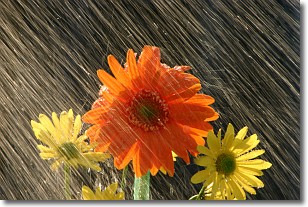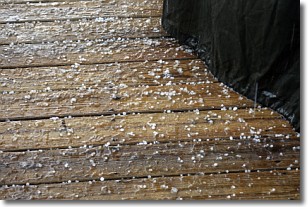Weather Alert in Maine
Air Quality Alert issued June 5 at 12:07AM EDT by NWS Gray ME
AREAS AFFECTED: Coastal York; Coastal Cumberland; Sagadahoc; Lincoln; Knox; Coastal Waldo
DESCRIPTION: The Maine Department of Environmental Protection's Bureau of Air Quality has issued an Air Quality Alert for ozone and particle pollution until 11 PM EDT this evening. Ozone levels are expected to rise into the Unhealthy for Sensitive Groups range today June 5th. In addition, particle pollution levels are expected to be moderate statewide due to wildfire smoke. It is important to remember that even in areas with moderate levels of ozone and particle pollution, the health impacts will be compounded by the effects of heat and humidity. The Maine Department of Environmental Protection recommends that individuals consider limiting strenuous outdoor physical activity to reduce the risk of adverse health effects. People who may be especially sensitive to the effects of elevated levels of pollutants include the very young, the elderly, those with pre-existing respiratory problems such as asthma, those with heart disease and anyone who is working hard outdoors. It is okay to be active outdoors. But if you experience symptoms such as shortness of breath, coughing, throat irritation or an uncomfortable sensation in your chest please consider limiting the intensity and duration of your outdoor activities. A toll free air quality hotline has been established so Maine residents can stay informed on the air quality situations. The toll free number is: 1-800-223-1196. Additionally the Maine Department of Environmental Protection has the air quality forecast available on the web at www.maine.gov/dep/air/aqforecast.
INSTRUCTION: N/A
Want more detail? Get the Complete 7 Day and Night Detailed Forecast!
Current U.S. National Radar--Current
The Current National Weather Radar is shown below with a UTC Time (subtract 5 hours from UTC to get Eastern Time).

National Weather Forecast--Current
The Current National Weather Forecast and National Weather Map are shown below.

National Weather Forecast for Tomorrow
Tomorrow National Weather Forecast and Tomorrow National Weather Map are show below.

North America Water Vapor (Moisture)
This map shows recent moisture content over North America. Bright and colored areas show high moisture (ie, clouds); brown indicates very little moisture present; black indicates no moisture.

Weather Topic: What is Rain?
Home - Education - Precipitation - Rain
 Next Topic: Shelf Clouds
Next Topic: Shelf Clouds
Precipitation in the form of water droplets is called rain.
Rain generally has a tendency to fall with less intensity over a greater period
of time, and when rainfall is more severe it is usually less sustained.
Rain is the most common form of precipitation and happens with greater frequency
depending on the season and regional influences. Cities have been shown to have
an observable effect on rainfall, due to an effect called the urban heat island.
Compared to upwind, monthly rainfall between twenty and forty miles downwind of
cities is 30% greater.
Next Topic: Shelf Clouds
Weather Topic: What is Sleet?
Home - Education - Precipitation - Sleet
 Next Topic: Snow
Next Topic: Snow
Sleet is a form of precipitation in which small ice pellets are the primary
components. These ice pellets are smaller and more translucent than hailstones,
and harder than graupel. Sleet is caused by specific atmospheric conditions and
therefore typically doesn't last for extended periods of time.
The condition which leads to sleet formation requires a warmer body of air to be
wedged in between two sub-freezing bodies of air. When snow falls through a warmer
layer of air it melts, and as it falls through the next sub-freezing body of air
it freezes again, forming ice pellets known as sleet. In some cases, water
droplets don't have time to freeze before reaching the surface and the result is
freezing rain.
Next Topic: Snow
Current conditions powered by WeatherAPI.com




